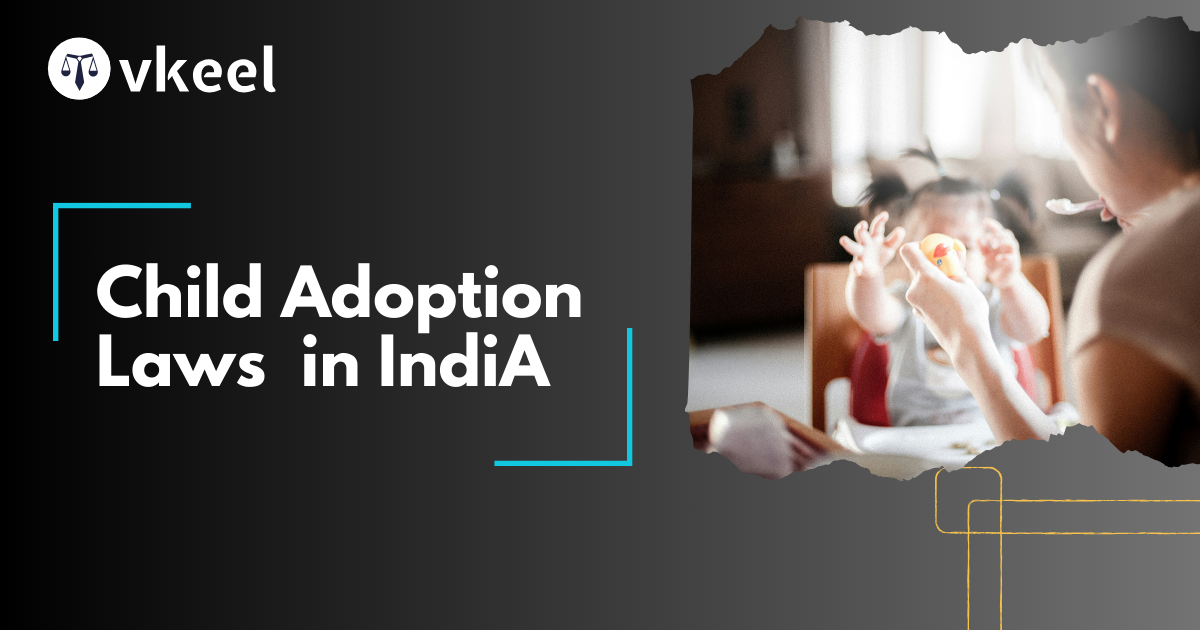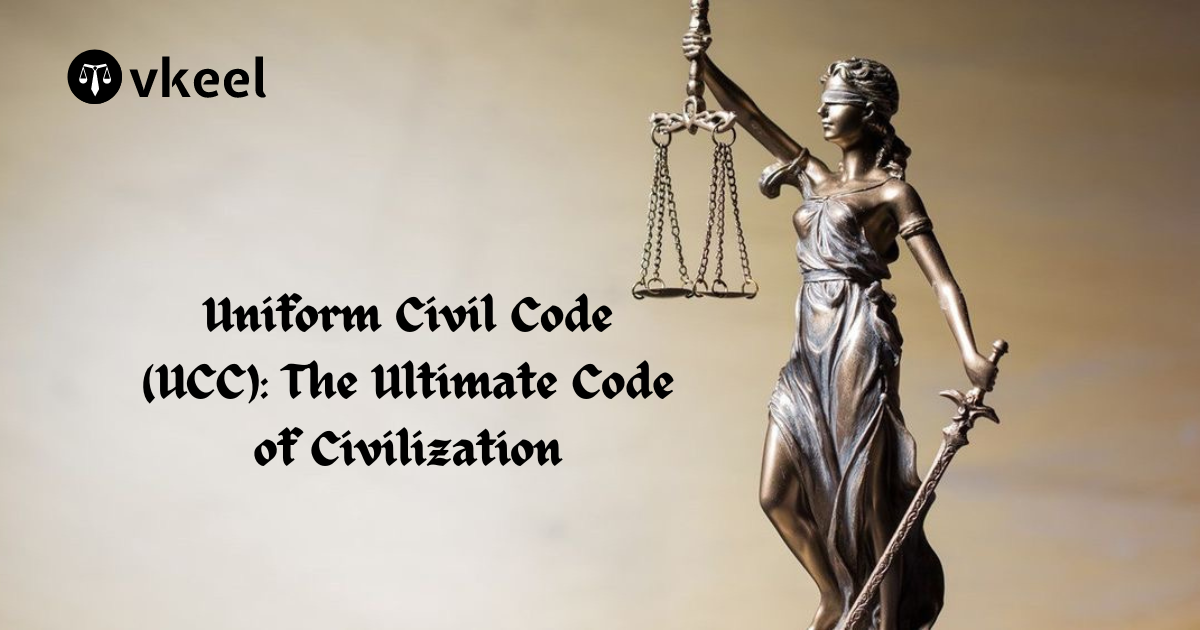Understanding Child Adoption laws in India
By Himanshu Kumar
Table of Contents
Introduction
Adoption is a legal process that establishes a parent-child relationship between individuals who are not biologically related. In India, the laws governing adoption aim to safeguard the welfare and rights of children while ensuring a transparent and ethical adoption process. Over the years, these laws have evolved to meet the changing needs of society.
Child adoption is a profound decision that shapes not only the lives of the adoptive parents but also the future of the child. In India, where adoption is deeply intertwined with cultural and religious beliefs, the legal framework governing adoption is multifaceted. Among the various legislations, the Hindu Adoption and Maintenance Act (HAMA) holds significant relevance for Hindus, Jainas, Sikhs, and Buddhists.
Characteristic of the Hindu Adoption and Maintenance Act (HAMA)
The Hindu Adoption and Maintenance Act (HAMA) of 1956 is a significant piece of legislation in India, governing adoption among Hindus, Buddhists, Jains, and Sikhs. It delineates the legal framework surrounding adoption, maintenance, and inheritance rights within these communities.
Following are the characteristics:
Applicability and Scope:
- HAMA applies to Hindus, Buddhists, Jains, and Sikhs, providing a uniform legal framework for adoption within these communities.
- It regulates both formal adoption and giving in adoption, addressing the rights and responsibilities of the adoptive parents, adoptee, and biological parents.
Sacred Obligation:
- HAMA recognizes adoption as a sacred obligation rooted in Hindu traditions, emphasizing the importance of maintaining family lineage and continuity of rites.
- Adoption is considered a sacramental act, reflecting the religious and cultural beliefs of the community.
Capacity to Adopt:
- The Act specifies the eligibility criteria for adoption, stating that any Hindu, Buddhist, Jain, or Sikh of sound mind and who has attained the age of majority is competent to adopt.
- If married, the consent of the spouse is generally required, unless the spouse has renounced the world or is incapable of giving consent.
Restrictions on Adoption:
- HAMA imposes certain restrictions on adoption to safeguard the welfare of the child and maintain the integrity of family structures.
- For instance, a person who already has a Hindu son, son’s son, or son’s son’s son cannot adopt another son without the consent of existing male heirs.
Formalities and Ceremonies:
- The Act emphasizes the importance of adhering to prescribed formalities and ceremonies to ensure the validity of adoption.
- Adoption must be made in compliance with any law regulating adoption and must be performed through ceremonies recognized by custom or law.
Legal Consequences of Adoption:
- HAMA delineates the legal consequences of adoption, stating that after adoption, the child becomes the legitimate child of the adoptive parents.
- The adopted child severs all ties with their biological family and is entitled to inherit the property of the adoptive parents.
Rights of Adopted Child:
- The Act confers certain rights upon the adopted child, ensuring their welfare and protection.
- Adopted children are deemed to be the children of their adoptive parents for all purposes with effect from the date of adoption, enjoying the same rights and privileges as natural-born children.
Maintenance Obligations:
- In addition to adoption, HAMA addresses maintenance obligations towards dependents, including spouses, children, and aged parents.
- It imposes a legal duty on individuals to provide maintenance to their dependents according to their capacity and means.
Revocation of Adoption:
- Under certain circumstances, adoption made under HAMA can be revoked, such as if it was made by fraud or force, or if the adopted child commits certain prohibited acts against the adoptive parents.
Inheritance Rights:
- HAMA also addresses inheritance rights, ensuring that adopted children have equal rights to inherit ancestral property alongside natural-born children.
- Adopted children are entitled to the same share of property and inheritance as biological children, reflecting the principle of equality.
Understanding the Hindu Adoption and Maintenance Act (HAMA)
The Hindu Adoption and Maintenance Act, enacted in 1956, embodies the principles of Hindu law concerning adoption and maintenance. It applies to Hindus, Buddhists, Jains, and Sikhs, regulating both the process of adoption and the rights and responsibilities arising from it. The Act recognizes adoption as a sacred obligation, facilitating the transfer of parental rights and responsibilities to the adoptive parents.
Key Provisions of HAMA:
Section 5 – Capacity to Adopt
Section 5 of HAMA delineates the eligibility criteria for adoption. Any Hindu, Buddhist, Jain, or Sikh of sound mind and who has attained the age of majority is competent to adopt. However, if the person is married, the consent of their spouse is necessary unless such spouse has renounced the world or is incapable of giving consent.
Section 6 – Restrictions on Adoption
Section 6 imposes certain restrictions on adoption to ensure the welfare of the child. For instance, a person who already has a Hindu son, son’s son, or son’s son’s son cannot adopt another son, except with the consent of their existing male heirs.
Section 7 – Conditions for a Valid Adoption
This section lays down the essential conditions for a valid adoption under HAMA. It mandates that adoption must be made in compliance with the requirements of any law regulating adoption, and it must be made by a person capable of giving in adoption.
Section 11 – Effect of Adoption
Section 11 elucidates the legal consequences of adoption under HAMA. It stipulates that after adoption, the child severs all ties with their biological family and becomes the legitimate child of the adoptive parents. The adopted child is entitled to inherit the property of their adoptive parents, and they enjoy the same rights and privileges as a natural-born child.
Section 12 – Rights of Adopted Child
Section 12 confers certain rights upon the adopted child, ensuring their welfare and protection. It declares that the adopted child shall be deemed to be the child of his or her adoptive parents for all purposes with effect from the date of the adoption.
Procedure of adopting a child in India
The procedure of adopting a child in India under the Hindu Adoption and Maintenance Act (HAMA) involves several steps to ensure the legal validity of the adoption. Here’s a detailed description of the adoption process under HAMA:
Eligibility Check
- The first step is to ensure that the prospective adoptive parents meet the eligibility criteria outlined in HAMA. This includes being Hindu, Buddhist, Jain, or Sikh, of sound mind, and having attained the age of majority.
Consent of Spouse
- If the prospective adoptive parent is married, the consent of their spouse is generally required for the adoption process. However, there are exceptions where the consent may not be necessary, such as if the spouse has renounced the world or is incapable of giving consent.
Application for Adoption
- The prospective adoptive parents need to file an application for adoption with the competent authority, which could be a court or an authorized agency, depending on the jurisdiction.
- The application typically includes personal details of the adoptive parents, their marital status, financial stability, and reasons for seeking adoption.
Home Study and Assessment:
- As part of the adoption process, the adoptive parents may undergo a home study and assessment conducted by the competent authority or a designated social worker.
- The purpose of the home study is to evaluate the suitability of the adoptive parents and their home environment for the upbringing of a child.
Adoption Ceremony:
- In accordance with HAMA, the adoption may be solemnized through customary or religious ceremonies recognized by the community.
- The adoption ceremony may involve rituals such as giving and receiving the child, offering prayers, and seeking blessings from elders.
Registration of Adoption:
- After the adoption ceremony, the adoptive parents must ensure that the adoption is legally registered with the competent authority or registrar of births and deaths.
- Registration of adoption provides official recognition of the adoption and facilitates the issuance of legal documents such as a birth certificate for the adopted child.
Post-Adoption Follow-Up:
- Following the completion of the adoption process, the competent authority or adoption agency may conduct periodic follow-up visits to ensure the well-being and adjustment of the adopted child in the new family environment.
- The adoptive parents may also receive support and guidance from social workers or counselors to address any challenges or issues that may arise post-adoption.
Documents required for adoption
Following are the documents:
Application Form
- Prospective adoptive parents need to fill out an application form provided by the competent authority or adoption agency. This form collects personal details such as name, address, marital status, occupation, and contact information.
Identity Proof
- Copies of valid identity proofs such as Aadhar card, passport, voter ID card, or PAN card of the prospective adoptive parents are usually required to verify their identity and citizenship.
Address Proof
- Copies of documents serving as proof of residence, such as electricity bill, water bill, ration card, or rental agreement, are necessary to establish the residential address of the adoptive parents.
Marriage Certificate
- If the prospective adoptive parents are married, a copy of their marriage certificate is required to validate their marital status and relationship.
Income Proof
- Documents demonstrating the financial stability and capacity of the adoptive parents to support the child, such as income tax returns, salary slips, bank statements, or employment certificates, may be requested.
Medical Fitness Certificate
- A medical fitness certificate from a registered medical practitioner certifying the physical and mental health of the adoptive parents may be required to ensure their ability to care for the child.
Police Verification Report
- A police verification report or clearance certificate confirming that the adoptive parents have no criminal record or pending legal issues is often mandatory for adoption.
No Objection Certificate (NOC)
- If the adoptive parents have any dependents or family members whose consent is necessary for adoption (e.g., spouse, adult children), a no objection certificate (NOC) from them may be required.
Character Reference Letters
- Character reference letters from individuals who can attest to the moral character, suitability, and parenting abilities of the prospective adoptive parents may be requested.
Consent Forms
- If the adoption involves relinquishment of parental rights by the biological parents or guardians, consent forms or affidavits acknowledging and consenting to the adoption may be required.
Court Orders or Deeds:
- Any court orders, decrees, or deeds related to previous adoptions, divorces, or legal proceedings involving the adoptive parents need to be submitted for verification.
Adoption Deed or Agreement:
- A legally executed adoption deed or agreement, formalizing the adoption and establishing the legal relationship between the adoptive parents and the adopted child, is a crucial document.
Case laws shaping adoption law in India under HAMA
Gita Hariharan v. Reserve Bank of India (1999)
In this landmark case, the Supreme Court clarified the gender-neutral nature of adoption under HAMA. It ruled that a Hindu mother has the right to adopt a child without the consent of her husband, recognizing the autonomy of women in matters of adoption.
Raji Chacko v. state of kerala (2000)
In this case, the Kerala High Court emphasized the importance of compliance with adoption ceremonies prescribed by custom or law. The court held that failure to perform essential ceremonies renders the adoption void, underscoring the significance of adherence to procedural formalities.
Shabnam Hashmi v. Union of India (2014)
This case addressed the inheritance rights of adopted children under HAMA. The Supreme Court affirmed that adopted children have equal rights to inherit ancestral property, emphasizing the principle of equality among biological and adopted children.
Way Forward
Over the years, there have been discussions on amending HAMA to address emerging concerns and align with evolving societal norms. Some proposed amendments include provisions for inter-country adoption, simplification of adoption procedures, and strengthening safeguards against child trafficking and illegal adoptions.
The adoption landscape in India is gradually evolving, with an increasing emphasis on child welfare and protection. Government initiatives, coupled with judicial interventions, seek to streamline adoption processes, promote transparency, and prioritize the best interests of the child.
Conclusion
The Hindu Adoption and Maintenance Act serves as a cornerstone of child adoption laws in India, offering a comprehensive framework rooted in cultural and religious beliefs. Through its provisions, case laws, and potential amendments, HAMA continues to shape the landscape of adoption, ensuring the rights and welfare of adopted children while balancing the interests of adoptive parents and biological families. As India progresses towards a more inclusive and child-centric approach to adoption, it is imperative to uphold the spirit of HAMA while embracing reforms that reflect the evolving needs of society.
Disclaimer:
The information provided in the article is for general informational purposes only, and is not intended to constitute legal advice or to be relied upon as a substitute for legal advice. Furthermore, any information contained in the article is not guaranteed to be current, complete or accurate. If you require legal advice or representation, you should contact an attorney or law firm directly. We are not responsible for any damages resulting from any reliance on the content of this website.










